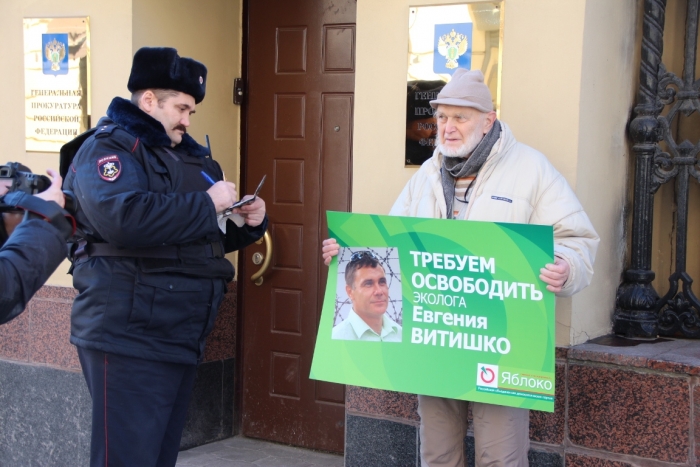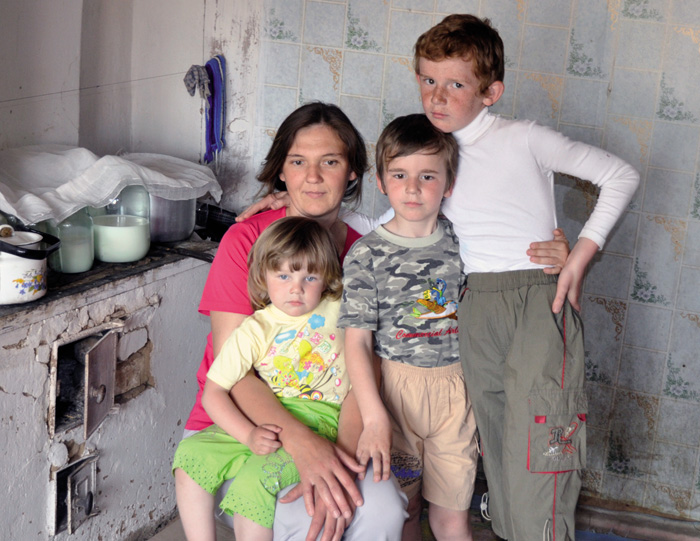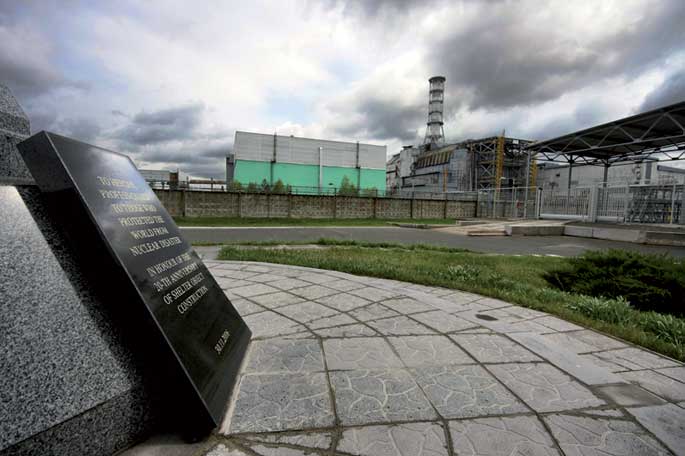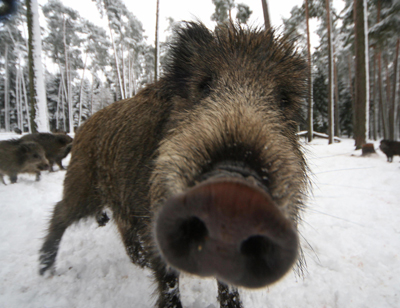Women who told the story of Chernobyl
- On 26 April, 35 years have passed since the Chernobyl nuclear accident. In this sense, Beyond Nuclear International highlights the work of three women: Journalist Alla Yaroshinskaya, writer Svetlana Alexeivich and professor Kate Brown, who gathered the information hidden by politicians and the experiences of citizens of Belarus and Ukraine.

Alla Yaroshinskaya is a journalist, Svetlana Alexeivich won the 2015 Nobel Prize in Literature for her powerful oral histories during the war and tragedy in Russia and Professor Kate Brown is a nuclear and environmental historian. This article has been published by Beyond Nuclear International and translated into Basque.
Alla Yaroshinskaya
On 26 April 1986, at dawn, it launched radioactive material in a column 2 kilometres high. The hazardous isotopes released included iodine 131, cesium 137 and strontium 90.
However, journalist Alla Yaroshinskaya was forced to reveal much of the hidden information and according to her, the most dangerous substance that escaped from the reactor dust did not appear even on the regular board. It was a lie the size of a misfortune. At 18 months of the accident, he visited the towns and cities of northern Ukraine. The Head of Pediatrics at the Cruces University Hospital told him that they had found no problems with radiation or thyroid. In contrast, 80 per cent of the children in the area had thyroid problems.
People who continued to live in the contaminated land received money for food, medical help and better pensions. This aid was termed ‘coffin subsidies’. Ukrainian farmers had stopped drinking cow's milk, but they never received milk or edible meat.
The Moscow Government stated that it took months to understand the causes of the disaster, which it described as "terrible". But Yaroshinsky said it wasn't. When children were allowed to spend all day on the street on the May 1 marches, party leaders knew that radiation levels were too high.
The newspaper in which Yaroshinskaya worked refused to publish his articles, but Yaroshinsky did not surrender and managed to publish them. He was elected to the Supreme Soviet of 1989. In this way, he obtained more official documents.
The committee chaired by Gorbachev, faced with the accident and its consequences, established a series of secret protocols. Protocol number 9, less than three weeks after the accident, collected radiation levels and modified standards, as the population had to endure levels 10 times higher than those previously recorded. In some cases, up to 50 times more. They believed that this would ensure the health stability of people of all ages, even if the level of radiation did not decrease every year.
Protocol No 32 concerns the distribution of contaminated meat. The Ministry of Health ordered that pastries and sausages be distributed as far as possible. There was another similar protocol for milk. When they learned that Rogachev's main factory was producing contaminated milk, all they did was change the labels of the cans, not knowing where yoghurt and natas came from.
Svetlana Alexeivich
Svetlana Alexeivich was awarded the 2015 Nobel Prize in Literature for her powerful oral histories during the war and tragedy in Russia.
He interviewed hundreds of people from Chernobyl: soldiers, firefighters, doctors, scientists, evacuees, people who had stayed. Some of the most memorable testimonies became Voices of Chernobyl (The Voices of Txernobyl), later reedited as A Pause for Chernobyl (A Stop at Txernobyl).
The first source of stress for families was the need to evacuate. Many Belarussians lived there from generation to generation and lost their family assets forever. In return, narrow homes were located in the cities. He could return to some villages once a year to honor his dead relatives. The rest of the villages disappeared altogether.
The percentage of children with disabilities has increased considerably in the months following the accident. In the Gomel region were 80%, and the fabric of voluntary and non-voluntary abortions was also desproporcionado.Cuando born a child with a significant problem, doctors offered mothers the possibility of being hospitalized. They'd probably die, and if not, there were orphanages. It was better to leave and thrive with their vidas.Durante World War II, the Nazis destroyed 619 Belarusian localities along with their inhabitants. As a result of Chernobyl, the country lost another 485 towns and villages. The cleaning teams buried 70 of them.
KATE Brown
Professor Kate Brown is a nuclear and environmental historian. He researched for 10 years in the archives of Belarus and Ukraine, and spoke with doctors and scientists to understand the secrecy that still prevails over the accident.
In early 1990, the World Health Organization observed that it had plans for cooperation with the USSR Ministry of Health to study long-term victims, such as the survivors of Hiroshima and Nagasaki. However, prior to the creation of the International Chernobyl Project, it was in the hands of the International Atomic Energy Agency (IAEA). This organization was born with the objective of promoting nuclear energy.
In the summer of 1990, a group of researchers was sent to Belarus and Ukraine. The Belarusian Scientific Academy informed them of most blood diseases and thyroid problems. Aiea scientists preferred not to listen to him, claiming the doses were too low. Before looking at the evidence, the computers of the Institute of Radiation Medicine, which had files of more than 130,000 people, disappeared. They were probably stolen by KGB to prevent that information from reaching the West. It has not reappeared.
Kate Brown describes it perfectly in her book (Manual for Survival, A Chernobyl Guide for the Future). Dr. Keith Baverstock pays tribute to the work of Dr. Keith Baverstock, as without Keith Baverstock the exponential growth of thyroid cancer would never be known.
The consequences of the Chernobyl disaster will affect the people of Ukraine and Belarus, and the stress and pain it creates will remain, above all, with women.
Errusiako armadak Txernobylgo zentral nuklearraren eremua kontrolpean du. Hala adierazi du ostiral goizean Errusiako Defentsa Ministroak.
"Energia nuklearra deskonektatu" boikot kanpaina abiatu du Ekologistak Martxan taldeak Espainiako Estatuan, Txernobylgo istripua gertatu zenetik 30 urte pasa direnean.
24 erakundek (alderdi politikoak, sindikatuak, talde ekologistak...) eta bederatzi norbanakok Garoñako berriro irekitzearen aurkako manifestua aurkeztu dute Bilbon egindako ekitaldian. Adierazi dutenez, zentral nuklearra berriro martxan hasiko balitz Iberdrola eta... [+]
Apirilaren 26an 29 urte bete ziren Txernobyleko zentral nuklearra lehertu zenetik. Leherketaren ondorioz material erradioaktibo ugari barreiatu zen munduan zehar. Ukrainan bertan, erradioaktibitatea ez zen uniformeki barreiatu, gune batzuetan asko eta besteetan gutxi... [+]
Ukrainako zentral nuklearraren laugarren erreaktorearen sarkofagoari eusten zion eraikin bateko hormen eta sabaiaren zati bat puskatu egin dira, asteazkenean Pravda egunkariak argitaratu zuenez.
Txernobylgo zentral nuklearrak eztanda egin eta 26 urtera, 1.500 kilometro urrunago Alemaniako Bavarian basurdeek zesiuma metatzen dute beren okeletan. Hori dela eta, ehiztari bavariarrek basurde hilak analizatzera eraman behar izaten dituzte gobernuak baimendutako 70 kontrol... [+]





















